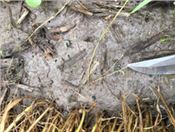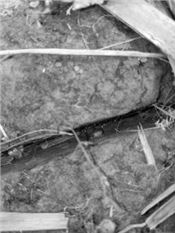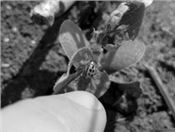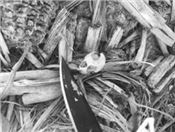|
Scouting For Early Season Pests In Corn And Soybean After A Late Start
DR. NICK SEITER
URBANA, ILL.
It goes without saying that this spring has been a challenge. With extreme planting delays throughout the state, crop development is well behind normal expectations, while insect pest populations have continued to progress. In addition, the tight schedule we have faced has forced planting into less than ideal conditions in terms of both soil moisture and weed control, which can have consequences for insect pest management. There are a few pests in particular to target during early season scouting this season:
True armyworm, black cutworm, variegated cutworm
These insect pests are more likely to be a problem in later planted fields, especially where late burndown herbicide applications allowed weed cover to build up (unfortunately, an all too common occurrence this season). All three usually develop on weedy plant species, then move to corn or soybean when their weedy hosts mature or are killed with a herbicide; armyworms are more of a concern where there are dense populations of grasses, while black and variegated cutworms have a wider host range that includes legumes and other broadleaf plants in addition to grasses. While all of these can cause defoliation, the cutworm species can reduce stand directly when their feeding “cuts” the plant close to the ground. (Note: be sure to follow Kelly Estes on Twitter [@ILPestSurvey] for periodical updates on moth flights for true armyworm, black cutworm, and other pests).
Slugs
Slugs are primarily an issue in no-till or conservation tillage fields which have a lot of residue and moisture. The wet conditions that favor slug damage can also lead to problems with seed slot closure, which exacerbates slug damage by allowing them to feed on the developing plant as the seed germinates. Unfortunately we do not have a good rescue treatment for slugs in soybean in Illinois. The best management strategy is to plant into a warm, dry seedbed (not always an option this season), and tillage is the best control we have available.
Bean leaf beetle
Bean leaf beetle feeding is often noticed on soybean fields that are among the earliest planted in the state; when there are relatively few acres that have emerged, the highly mobile beetles are concentrated in those few fields. Usually this damage is mostly cosmetic, as soybeans are excellent at overcoming early defoliation. The economic threshold for defoliation of soybeans prior to bloom in Illinois is an average of 30 percent of leaf tissue removed with the defoliator still present in the field.
Scouting is necessary to determine both the necessity and timing of an insecticide application for these insect pests. We want to avoid “revenge sprays” that occur after the insect has either progressed through its life cycle (in the case of the caterpillar pests) or moved along to another field (bean leaf beetles) and is no longer damaging the crop. As always, feel free to contact me if you are seeing anything unusual in the field related to insect management. Here is hoping for improved conditions as the season moves forward. ∆
DR. NICK SEITER: Research Assistant Professor, Field Crop Entomologist, University of Illinois

Fig. 3. Several different developmental stages of true armyworm larvae in wheat.
Photo: Robert Bellm

Fig. 2. A true armyworm larvae. Note the light colored bands on the side,
the net-like pattern on the head, and the dark bands on the prolegs.
Photo: Frank Peairs, Colorado State University, Bugwood.org

Fig. 4. A slug in a seed slot left open due to wet planting conditions.
Photo: Nick Seiter

Fig. 6. A bean leaf beetle and its feeding damage on a young soybean plant.
Photo: Nick Seiter

Fig. 5. Slug damage to a soybean cotyledon.
Photo: Jennifer Woodyard, University of Illinois Extension
|
|